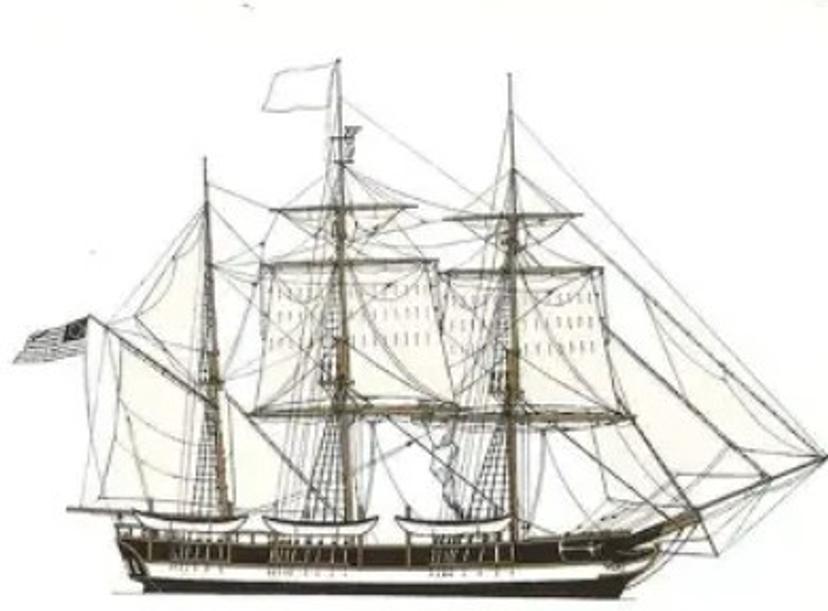Frank Armstrong
Vessel Name: Europa
Frank Armstrong
25 September 1868
Died on board; buried at sea

A square rigged American whale ship
Francis Armstrong, known as Frank, was born in Ireland. He migrated to America in 1850 escaping the Great Famine. He sailed from Dublin to New York and settled in Troy.
Later that year, Frank went to New Bedford, Massachusetts and boarded the whale ship Bevis. He spent 12 months as a greenhand, learning to hunt and process whales. He made a second greenhand voyage on Messenger the following year.
Frank’s American whaling records indicate he was a shade under 5 ft 11 in tall and was born in or around 1833. He learned whaling quickly and it helped that whaling crew members turned over each voyage leaving vacancies he could fill.
Frank's pay was a percentage, a “lay”, the amount of which depended on the ship’s catch. In today’s Australian currency an average price per tun of oil was $75. The captain’s lay was 1/8 of that [$9.30]. Frank’s lay was 1/30 [$2.50].
Frank was quickly promoted to a fourth mate’s position and boatsteerer on a whaleboat for the Cambria from July 1854 to April 1856. Frank returned to Troy after this voyage and did not return to sea until 1863 when he made a 12-month voyage on the Hecla.
In 1864 Frank was boatsteerer and third mate on the Napoleon, sailing to the Pacific and Atlantic Oceans under the command of William Fuller. Napoleon returned from a successful voyage in September 1867.
Frank shipped out again a month later aboard the Europa, a 949-ton whaleship sailing to the Indian Ocean under Captain John Nye.
Europa was registered with the official number 7139 in Massachusetts. She was 178 ft 11 in long and 33 ft 20 in across her beam. She drew 20 ft of water. She had two decks with copper sheathing on her hull, and she wore square rigging.
Under Captain Nye were four mates/boatsteerers leading the crews who manned Europa's four whaleboats: First mate Edward Coffin Jones, Second mate Manuel James A Wing, Third mate Frank and Fourth mate Daniel H Davis. They were experienced men with a history of successful hunting.
Captain Nye was known for long voyages and full holds. He was making his fourth voyage as master. They set sail in October 1867.
Europa made her way to the Indian Ocean with the season’s fleet. After a year at sea, she anchored at Albany in September 1868 to reprovision and rendezvous with the rest of the ships who planned to sail down to the Arctic.
After a week at anchor, Captain Nye rounded up his crew, and they set sail to the south. It was not long before they saw whales and gave chase. Frank fastened onto a whale and steered his whaleboat until the whale gave up the chase. Then came the tow to the Europa and the flensing process. Frank led his team cutting in the whale, removing the blubber with long handled blades.
Frank’s death did not come from an accident while chasing a whale or handling the flensing blade. He died suddenly on, dropping to the deck, seemingly without cause. With limited medical knowledge or equipment, it was established that Frank died of a natural cause such as a heart attack or apoplexy. It was a shock to his ship mates; he was only 35 years old and had seemed fit and healthy.
Europa was about 50 nautical miles south of Albany when Frank died. Captain Nye hove to and the crew gathered on deck to commit him to the sea. He was a respected and popular crew member who did not shirk his share of work.
Europa continued south into the Arctic for the season there. Joseph T Sampson stepped up into the Third mate/boatsteerer position. At the end of the season, the ship returned to New Bedford in April 1871 with a full hold. Europa continued whaling until she went ashore at Japan in 1887.
